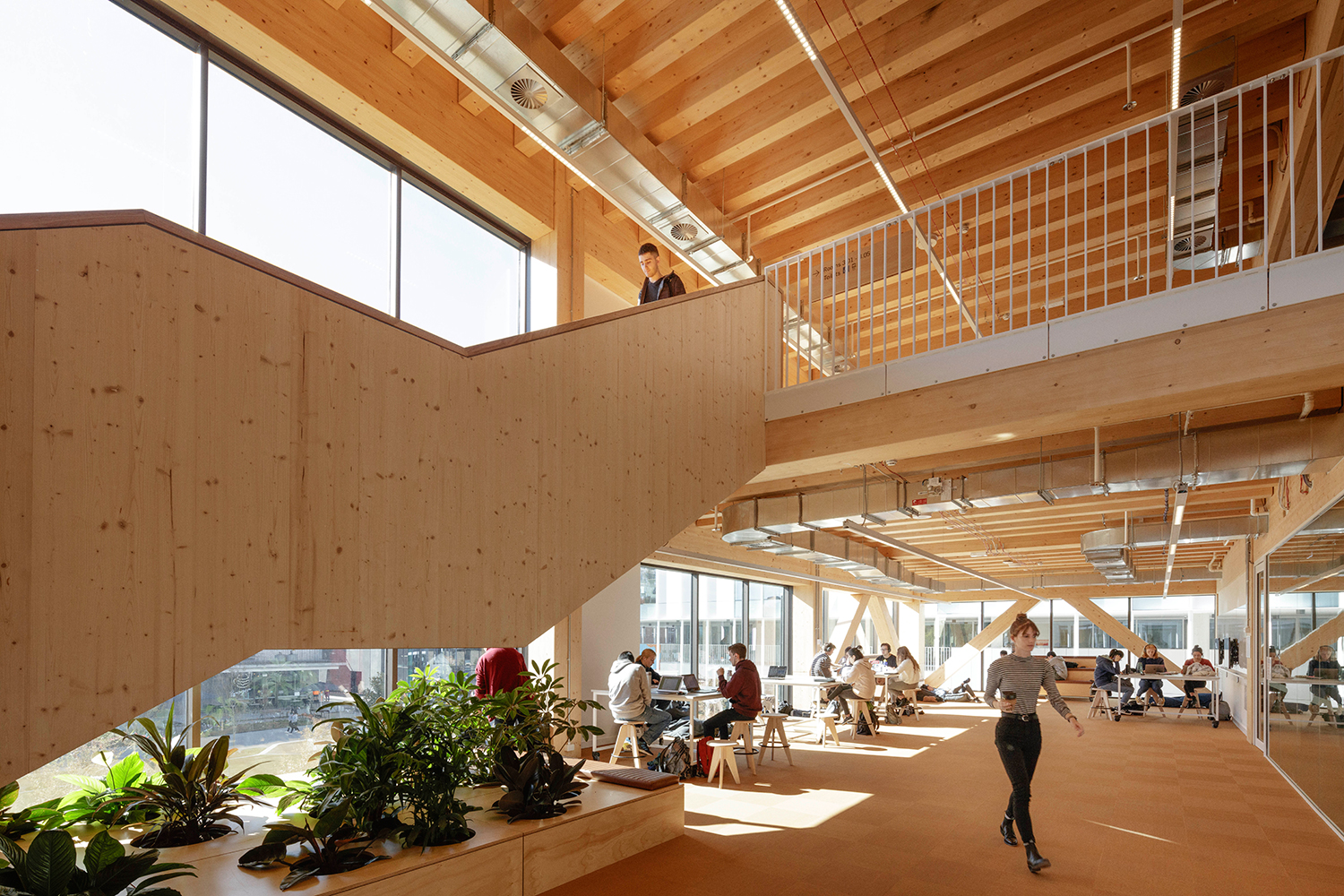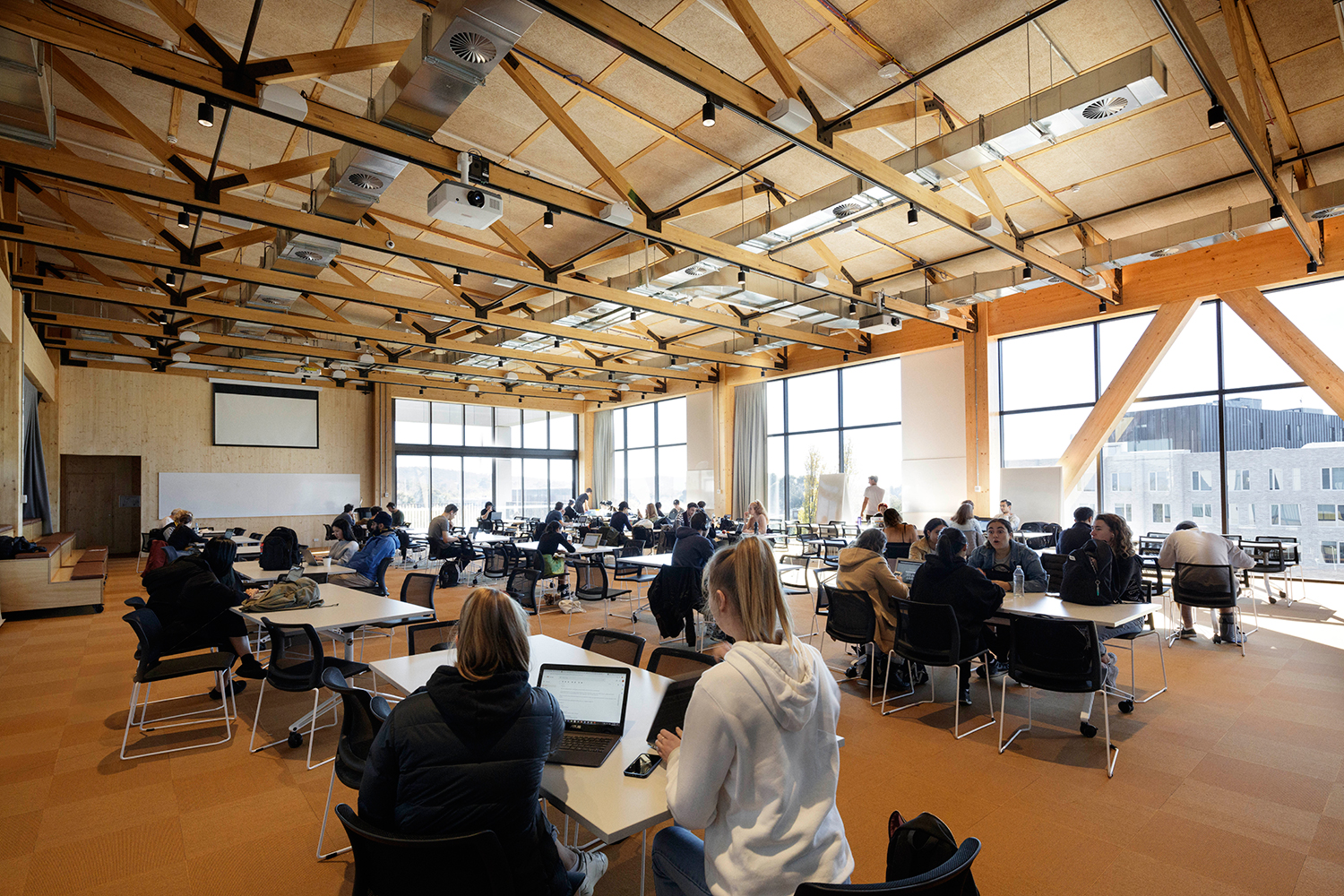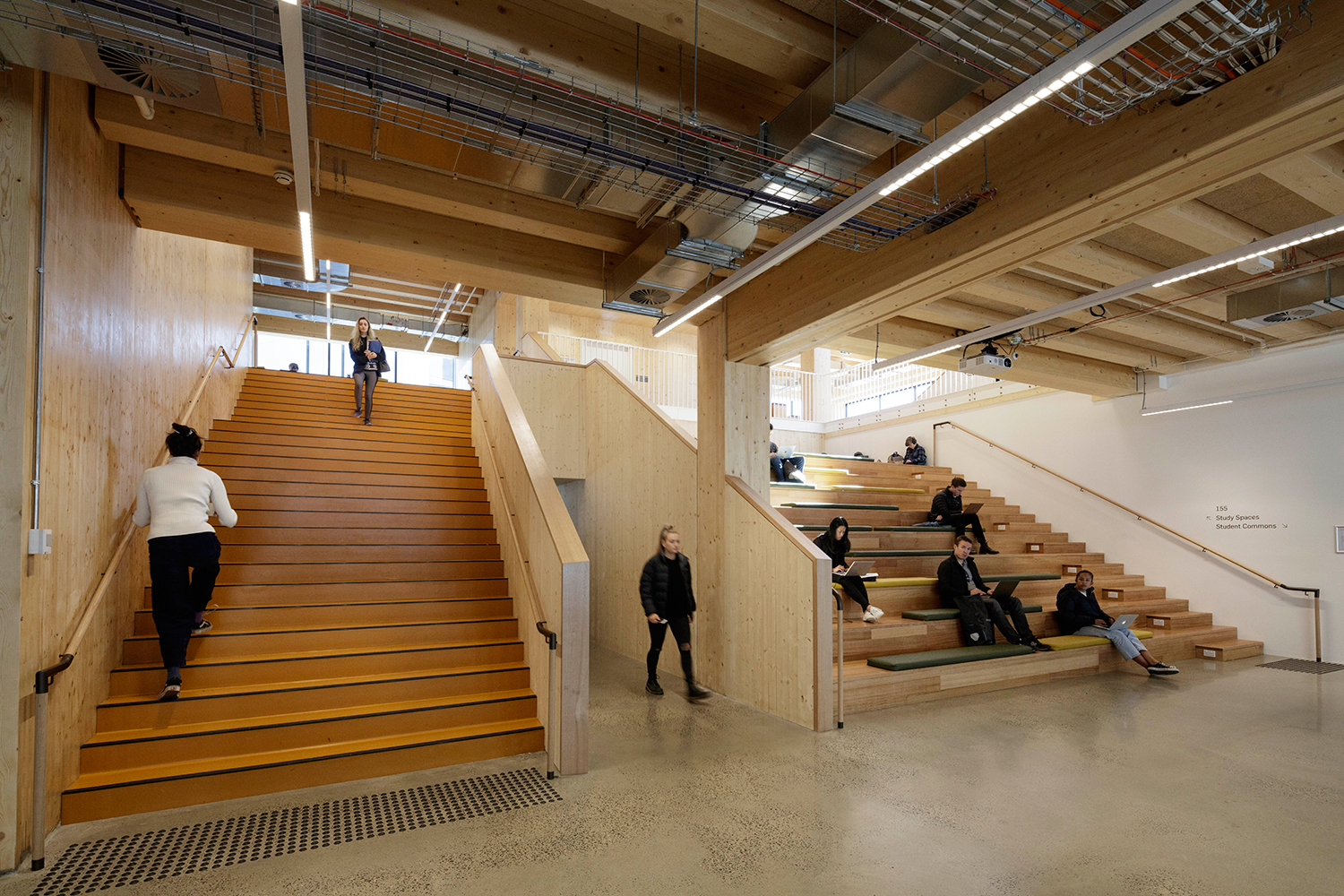Marie Reay Teaching Centre, ANU
BVN
Australia
This is a contemporary teaching/learning centre in the Kambri precinct of the Australian National University’s (ANU’s) campus in Canberra, with spaces that blur the lines between learning/teaching/innovation and socialisation, contributing to a holistic learning experience. The building offers flat-floor tutorial and studio-style interactive classrooms/common breakout spaces. A cross-laminated timber (CLT) built form was chosen specifically for its visual and wellness benefits.
The building is a six-storey flexible learning environment. It is an ecosystem of variable space types that share learning, cultural and social functions. The combination of spatial variety and reconfigurable rooms responds to the ever-changing needs of teaching spaces, which are underpinned by a need for flexibility and integrated technology. 24-hour operation gives the building life beyond teaching hours and enables space for peer-to-peer group learning and social events.
The building was designed from the inside out. The interior of the building is expressed on the facade and puts learning on display. Teaching and informal spaces are visible from the connecting stair, which reveals the theatre of the building to the external audience. Large operable doors at the ground floor open to the public realm and connect the building with the surrounding precinct. A generous connecting stair allows the public realm to conceptually move up through the building and promotes walking over lifts for a healthy building community.
Provision for large events, bleacher seating and a variety of flexible furniture settings creates a dynamic social environment and activates the ground plane. The typical floors contain flexible spaces that can accommodate between 30-120 people in a variety of settings.
The project adopted the ‘Ecological Footprint’ methodology by ‘Global Footprint Network’ as the evaluation measure. The Marie Reay Teaching Centre has achieved an interim certification of a ‘0.6 Planet’ rating and targeted the following key environmental attributes: embodied carbon reduction; solar power generation; reduced operating energy; rainwater capture; and the use of recycled materials and dematerialisation. The final ecological footprint rating will be known on final certification. It is on track to achieve a world’s best practice planet rating.
Furniture: Stylecraft. Finishes: Montage Finishes, Kvadrat Maharam.
Photography: John Gollings




